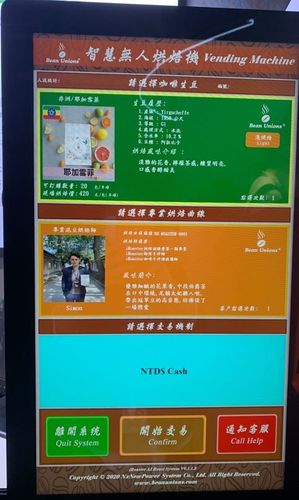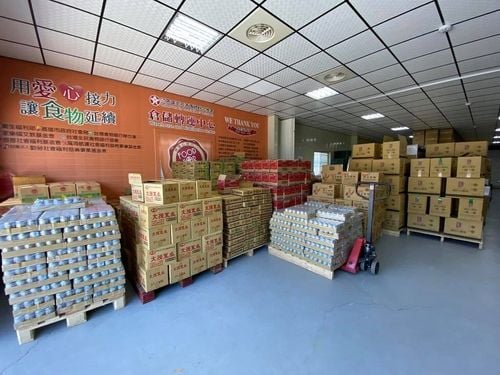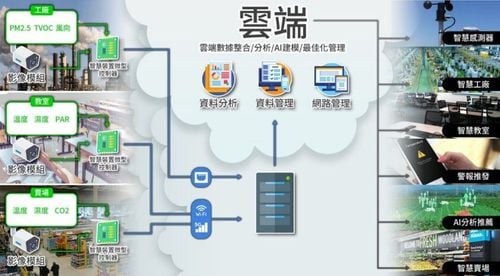【2024 Application Example】 AI Assists the Red Cross for Smarter Emergency Response
| More Preparation Less Loss The Taiwan Food Bank Association, a non-profit organization, collects donations daily from wholesalers, retailers, manufacturers, and even kind-hearted individuals across Taiwan. They also rescue consumable materials that are about to be discarded, properly allocate and deliver to households in need, aiding local underprivileged populations.
When natural disasters such as earthquakes, landslides, mudslides, typhoons, floods, and droughts occur in Taiwan, the food bank's resources can be immediately deployed for disaster relief. This field verification unit is the Nantou County Red Cross Association(One of the food bank locations, hereinafter referred to as the Nantou Red Cross)Is responsible for tasks like pre-disaster supplies preparation and disaster relief material distribution, helping the government bear the responsibility of disaster relief and aid.
In Taiwan, various natural disasters have characteristics of different duration and spatial coverage, wide or narrow. With the normalization of extreme weather, the scale and number of disasters are gradually increasing and becoming harder to predict. The required amount and type of materials differ by disaster, and they must address the lifestyles of the affected areas, rescue needs, traffic conditions, geographical restrictions, and other factors for varied material allocation, facing numerous challenges.
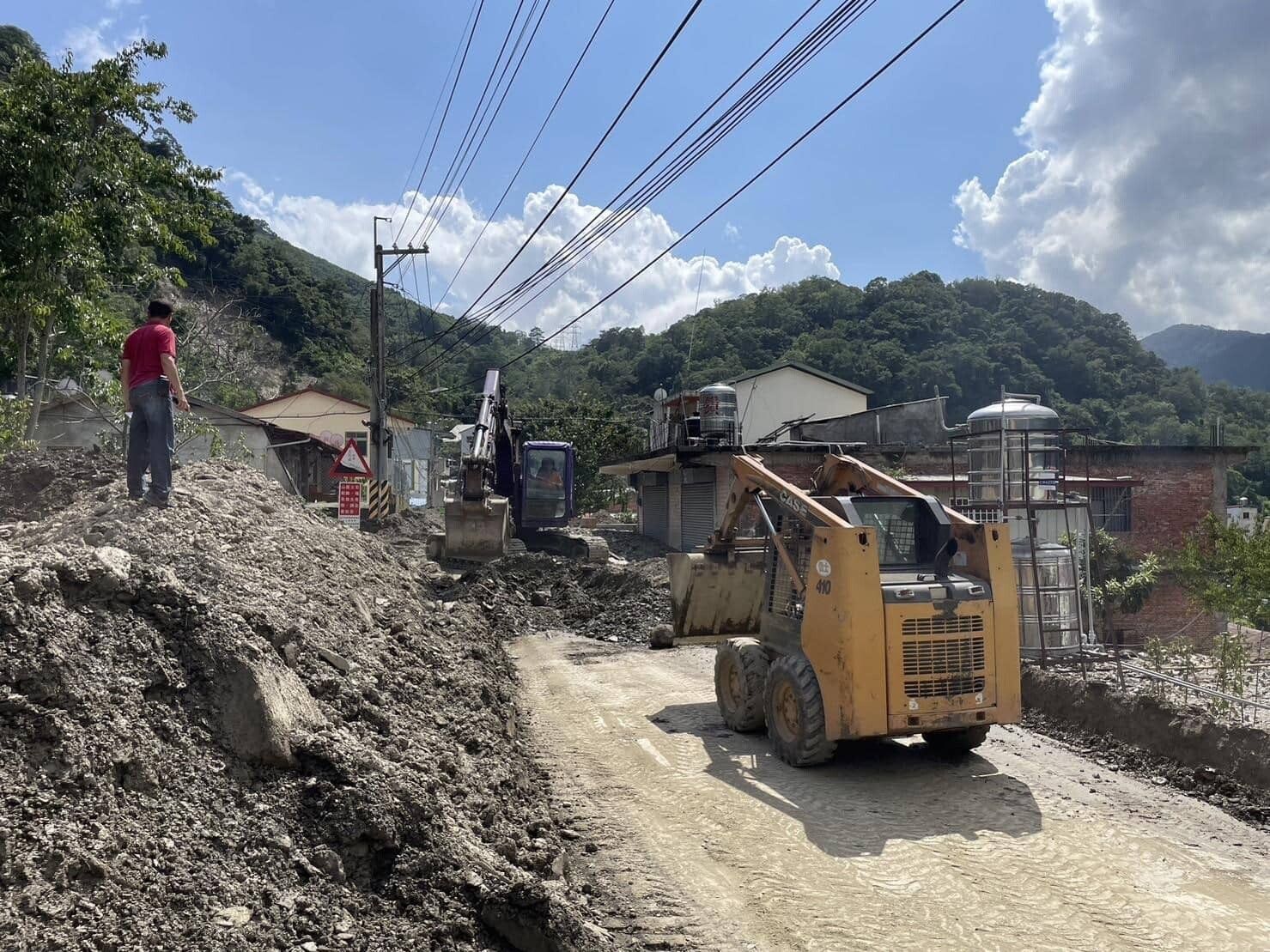
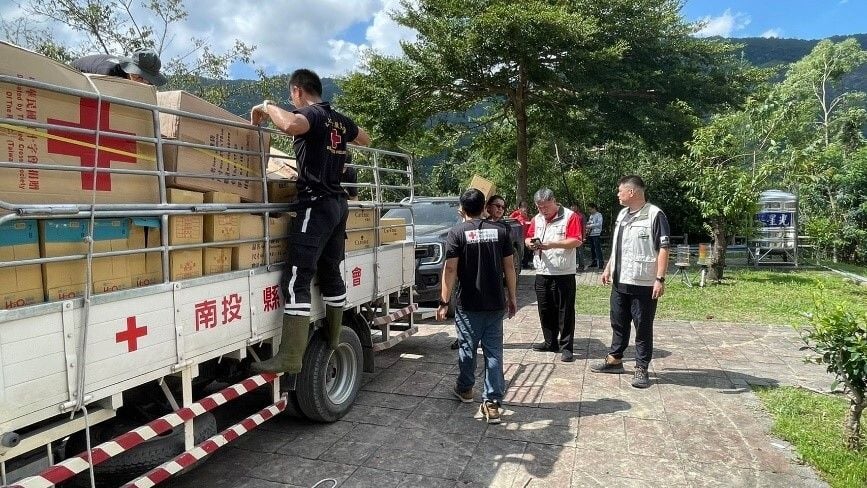
Disasters happen repeatedly. We need to be prepared at all times. Effective disaster preparedness can mitigate the impact, including swift response to material needs in affected areas, aid distribution, and even psychological support, providing added security for life and property of those in disaster zones. |
| Lack of Timeliness in Disaster Information To improve the living conditions and address the lack of supplies in remote areas, the Taiwan Food Bank Association has partnered with the Nantou Red Cross and has successively established food bank points in Nantou City, Puli, and Ren'ai(Lixing, Ruiyan), Xinyi(Wangmei, Tongfu), Shuili, Lugu and Caotun among others9establish food bank locations, providing supplies worth a certain amount per household every month600~1000in New Taiwan Dollars. However, many challenges still need to be overcome during natural disasters.
For example, when typhoons, earthquakes, and landslides occur, the information source for disaster relief dispatch systems relies on post-disaster reports. The time lag between reporting, response, and execution prevents timely adjustment and distribution of 'disaster relief' supplies based on the needs of affected areas, affecting rescue efficiency due to lack of timely information.
The 'preparedness' supplies of the Nantou Red Cross(such as dry food, water, instant noodles, etc.,)are recorded manually in terms of stock, expiration dates, and distribution,When a disaster occurs, there is a chance that 'preparedness' supplies have expired and cannot become 'disaster relief' supplies.
It’s also possible that both conditions mentioned above occur simultaneously,! leading to a need for more time to reassign 'preparedness' supplies into usable 'disaster relief' materials. On the other hand, upon receiving information about shortages in disaster areas, the supplies donated by the public often grossly differ from the actual needs of the disaster zone, leading to an excess of supplies.

|
|
|
| AIAnticipating Natural Disasters Reinforcing the Accuracy of Preparedness Material Dispatch Application API Technology connects to compute the state of the climate, the intensity of disaster rescues, prioritizing the main tasks of the Nantou Red Cross and the needed areas of search and rescue. Coordinated with the existing heavy rain and typhoon simulation disaster training of the Nantou Red Cross, a 'Natural Disaster Emergency Preparedness Material Dispatch and Supplement Decision System' is established(referred to as the Emergency Preparedness Material System)。
In material management, inventory data along with immediate supply data are entered into the Emergency Preparedness Material System for comparison and analysis, helping the Nantou Red Cross quickly recognize materials like cookies/dry food, beverages, frozen food, toilet paper, etc., and determining whether they should be 'preparedness' materials or regularly distributed materials. Adding to this, information forecasting understands the potential disaster conditions in remote areas, facilitating food delivery, addressing both front-end food wastage and backend practical needs. When a natural disaster occurs, it enables faster response and decision-making, completing material deployment, hence increasing the speed of material operation transition20%。
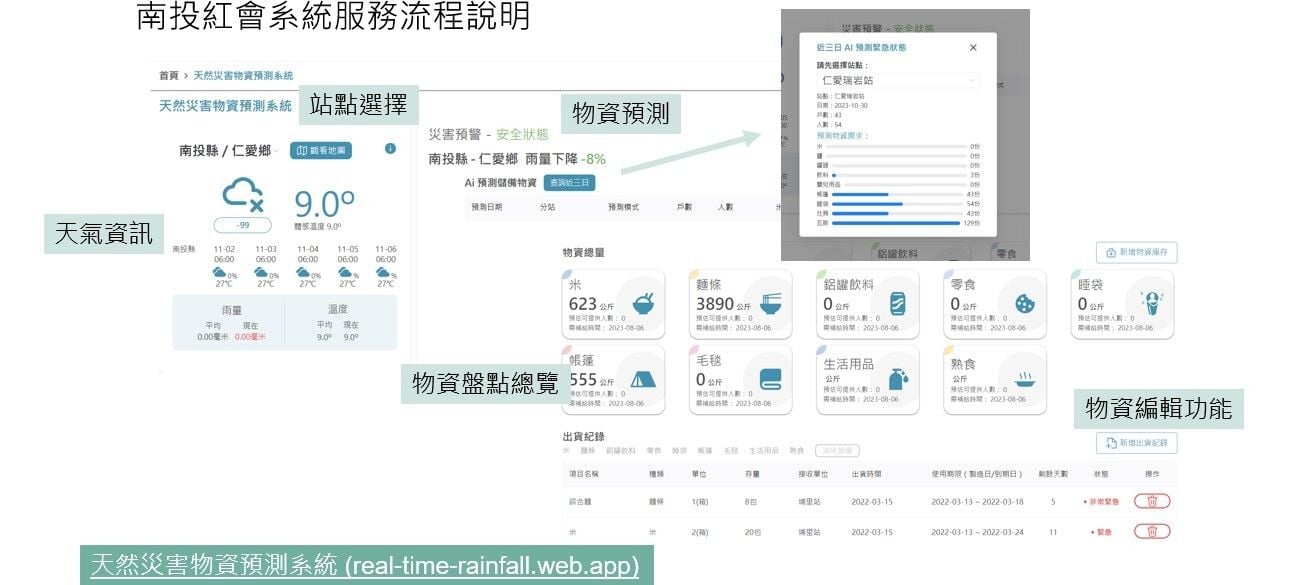
|
| Through the field verification of the Nantou Red CrossAIthe system, material management, and related applications are promoted to more emergency response organizations in different areas, while continuously improving the alert functions within the Emergency Preparedness Material System, strengthening the technological foundation for alerts, enhancing prediction accuracy/System immediacy, and optimizing the data collection and analysis process.
Simultaneously, it can collaborate with government agencies, meteorological departments, or other rescue teams to discuss integrating more data sources, establishing a mechanism to share resources and data promptly, sharing information in real-time, helping more emergency response organizations enhance their disaster response abilities, seizing the golden rescue time.
|
「Translated content is generated by ChatGPT and is for reference only. Translation date:2024-12-12」
